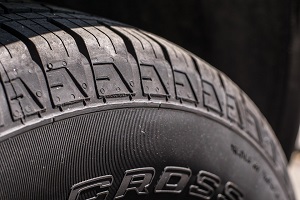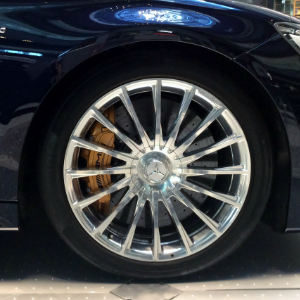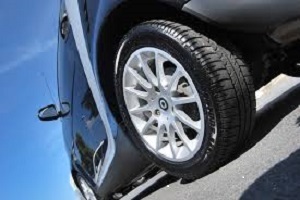What’s Inside Your Tires?

The Effect of Bigger Tires on Your Vehicle
 Bigger wheels and tires are a desirable upgrade for not only the off-road extremist but many everyday drivers as well. For example, you can go to Wal-Mart and count several SUVs in the parking lot with 20-inch rims because even “Glamma” wants to look cool. Tires can really make or break your vehicle in relevance to style and performance. Driving on bad tires can take a toll on your vehicle, and upgrading to new tires can make your vehicle drive like new again. When upgrading to bigger tires you also need to upgrade your rims. There are several benefits and disadvantages when considering an upgrade to tires or wheels.
Bigger wheels and tires are a desirable upgrade for not only the off-road extremist but many everyday drivers as well. For example, you can go to Wal-Mart and count several SUVs in the parking lot with 20-inch rims because even “Glamma” wants to look cool. Tires can really make or break your vehicle in relevance to style and performance. Driving on bad tires can take a toll on your vehicle, and upgrading to new tires can make your vehicle drive like new again. When upgrading to bigger tires you also need to upgrade your rims. There are several benefits and disadvantages when considering an upgrade to tires or wheels.
If you are driving a truck, you may want to consider getting a lift kit. This would allow room for massive wheels and tires depending on how big of a lift you get. For ...[more]
What you Need to Know Before Buying New Tires

The Incredible Evolution of Tires
With all the tires you encounter every day, it is easy to forget their humble beginning and just how far they have come since the early days of automotive development. Follow along as we recap the incredible evolution that has taken us from simple rubber rings to the products we see today.
The tire had rather humble beginnings. In the late 1800's the invention of the automobile necessitated something for them to roll on. Until then, wheels were rolling around on hard wooden rims or metal bands. In 1888 Carl Benz, one of the famous fathers of Mercedes Benz, invented a new type of tire to match his new type of conveyance, the automobile. It was a metal framed tire, covered with rubber and filled with air. This was the birth of the pneumatic or air filled tire and it revolutionized the world.
Carl Benz' tire had air but it didn't have any tread. It wasn't until 1905 that tread was added to the tire's surface to help it handle the wet, muddy ...[more]
Five Things You Didn’t Know About Tires
 1. For performance and handling, the trend has long been toward fatter tires with a bigger footprint. That’s starting to change, though. Skinnier tires mean lower rolling resistance and better fuel economy, as well as a smaller aerodynamic profile. While fatter tires do handle better, tire engineers are making up the difference by designing skinny tires with a stickier tread formulation for traction and cornering ability.
1. For performance and handling, the trend has long been toward fatter tires with a bigger footprint. That’s starting to change, though. Skinnier tires mean lower rolling resistance and better fuel economy, as well as a smaller aerodynamic profile. While fatter tires do handle better, tire engineers are making up the difference by designing skinny tires with a stickier tread formulation for traction and cornering ability.
2. Static electricity used to be a real concern for vehicles; if you’re old enough, you may remember seeing station wagons with a “ground strap” dragging along the pavement. It’s become a concern again, with newer tread compounds cutting back on the amount of carbon black in newer tires. The solution? Many tires are now designed with an “antenna strip” ...[more]



